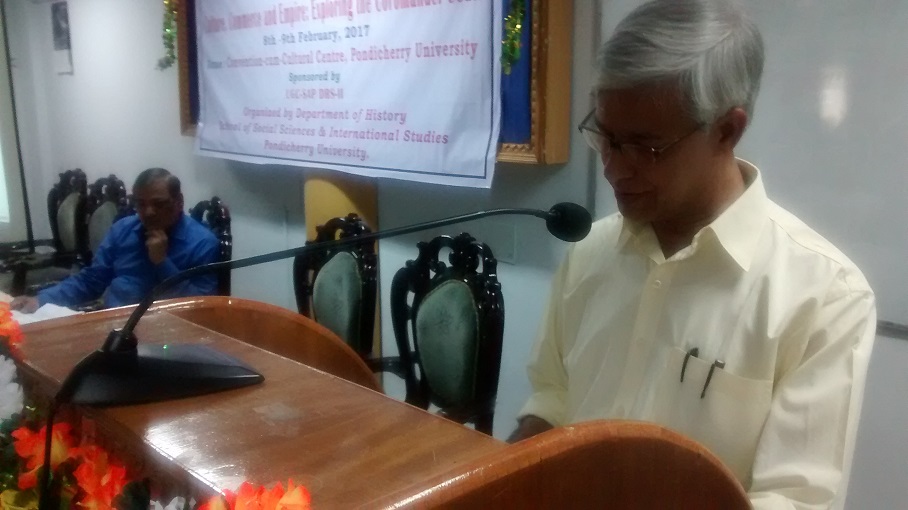From Khambat to Kaveripumpattinam to Poompuhar – The excavation, exploration and underwater exploration and excavation!

From S. R. Rao NIO to Ramaswamy and NIOT: S. R. Rao, NIO conducted excavations at the Tranqubar-Poompuhar coastal area during 1960s[1]. He also preliminary underwater exploration and excavation carried on during 1980s[2] and at that time, the TN Government was not so interested in pursuing further under the pretext of funds and other reasons. In fact, the then, CM off TN reportedly and sarcastically remarked, “You are going to prove that the city was submerged and the evidences are excavated, but, our literary evidences already say that.” However, the TN archaeologists, historians, Dravidologists and “myth-makers” always talk glory about submerged cities off Bay of Bengal and Indian Ocean off the south. The “Kumarik kandam” has always been favourite topic for them. Anybody, who does not support or talks against it would be dubbed and branded as “the enemy of the Tamils,” “traitor, renegade” and so on. The report of S. R. Rao with all details can be be read from this book[3]. Now SM Ramasamy has brought out details dating the city back to 15,000 YBP, relying upon Grahm Hancock[4].

The Sangam Cholas capital and Port city: The celebrated ancient port capital of Chola is situated on the confluence of the river Kaveri and the Bay of Bengal. It is believed that the ancient city of Poompuhar was submerged by the sea which finds a detailed description in Manimekhalai. The archaeological explorations have brought to light a large number of evidences indicating the partial submergence of the ancient town. A few brick structures have been found in intertidal zone and explorations in 5 m water depth yielded the evidence of rolled pottery which suggests that some part of habitation was submerged. A shipwreck dated to late 18th century CE has also been found off Poompuhar in 19 m water depth[5]. This shipwreck is yielding a large number of lead ingots. Tranquebar another site about 15 km south of Poompuhar has remains of Chola, Ducth and Danish period. There is a fort of Dutch settlement at Tranquebar which has been partially submerged in sea. This is an indication of shoreline changes during the last 300 yrs.

Poompuhar or Kaveripumpattinam: The NIO gives this narrative on Poompuhar[6], “Poompuhar, the submerged ancient port city situated in modern-day Mayiladuthurai district in Tamil Nadu, might have existed 15,000 years ago, and not 2,500 years ago as was earlier believed”, researchers at the department of remote sensing of Bharathidasan University (BDU) have said[7]. No sample, however, has been collected or dated. A group of researchers from NIOT have been publishing papers in “Current Science” and other journals[8], jointly and individually on the same and similar subject for the last five years[9]. Earlier studies had established that Poompuhar, also called Kaveripoompattinam, had maritime trade links with South East Asia and Egypt, before it disappeared from the maritime map around 1,000 years ago[10]. “While initially it was believed that the port city that gained prominence during the Chola dynasty was around 2,500 years old, the latest study based on offshore explorations and geological features interpreted on the sea floor estimates it was at least 15,000 years old,” the university said in a press release[11].

Poompuhar and Khambat: If scientific dating confirms the estimate, Poompuhar could be the oldest known ‘town’ in India and, arguably, across the world. Similar undersea explorations in the Gulf of Cambay off the Gujarat coast in the early 2000s had discovered a lost city believed to be the ancient Dwaraka, then dated to 7,500 BCE (which predates Mohenjodaro by 4,500 years). Actually, the NIOT announced the discovery of objects and the dates of them recovered during dredging operations at the Khambat. When the discovery was briefed by Dr Murali Manoher Joshi, a Physics Doctorate and Professor teaching physics. However, as he was a BJP Minister at that time, his briefing was criticized and the dating of the objects etc., were questioned by the leftists historians. Even Iravatham Mahadevan reacted to it[12]. Just like “submerged 15,000 years old Poompuhar city,” a submerged city was described with the material evidences recovered.

Research done in 2019 with NIOT-ships: The Poompuhar study, sponsored by the department of Science and technology and technically supported by the National Institute of Ocean Technology (NIOT), found structures that could’ve been a harbour, dockyards, human settlements and a lighthouse, around 40km from the present coast, at a depth of 50m-100m. Sometime in the middle of 2019, when scientists on board Sagar Tara and Sagar Anveshika, research vessels from the National Institute of Ocean Technology (NIOT), neared Poompuhar off the Tamil Nadu coast, they knew they were floating over history. Just that they didn’t know how old the civilization, whose remnants lay about 100m beneath their feet, was. Poompuhar, the ancient Tamil port city lost to the sea, was earlier believed to have been about 2,500 years old, when the Chola kings set sail to capture distant lands in the east.

The 15,000 years – is assumed: Now, the research team from Bharathidasan University’s Department of remote sensing says they have reasons to believe it was 15,000 years old. The study, sponsored by the Department of science and Technology and technically supported by NIOT, compared offshore exploration findings near the Poompuhar coast with sea level data generated by the Intergovernmental Panel on Climate Change (IPCC). In the next phase, NIOT will collect samples from the sea to substantiate the findings. The team said the geological features of the sea floor – a harbour, dockyards, human settlements and a lighthouse -have matched sea level conditions that existed 15,000 years ago.

Research carried on with Remote sensing methods: “Poompuhar had a harbour that sprawled over 11km in length and 3km in breadth, with breakwaters and canals to handle and store merchandise. We have found evidence of a primitive dockyard that could handle 70-80 ships at a time,” S M Ramasamy, professor of eminence and national coordinator, Project Poompuhar, Bharathidasan University, said. The university has published the part on harbour in the journal ‘Current Science’. D Rajasekhar, head, NIOT vessel management cell, said the team studied around 6,000sqkm and found most of the ruins at a depth of 25m to 50m below the seabed. A multibeam echosounder attached to the ship was used to study the variation in depth of the sea (bathymetry). Based on data collected by the echosounder, a sub-bottom profiler mapped the seafloor. In the next phase, NIOT will deploy a remotely operated vehicle (ROV) to capture images.


Photos taken by remotely operated vehicle (ROV): “We have completed a trial run with an ROV, which was attached with a camera and a sonar. We plan to collect some coring samples,” he said. The study found rowed settlements with compound walls and geological evidence of pits dug on the seafloor. Remains of an ancient lighthouse were found at a depth of 50m, with a spiral staircase and causeway pillars having a design like the Cleopatra lighthouse of Egypt. So, how did the old city go under? Ramaswamy said the region was prone to floods, tsunamis and accelerated impact of sea level rise and cyclone-induced storms.

Poompuhar was relocated at least six times before settling down at the present place: “Poompuhar was relocated at least six times before settling down at the present place. Due to marine transgression, the sea might have reached the land till the present day Mayiladuthurai around 6,000 years ago and regressed later,” the project coordinator said. Around 12 government and private educational institutions including Tamil University, Annamalai University and SASTRA University will be engaged in further studies of the research. “The study will go on for another year and the findings will encourage a similar study to explore Kumari Kandam, a mythical lost continent in the Indian Ocean,” the research team said. (With inputs from U Tejonmayam).
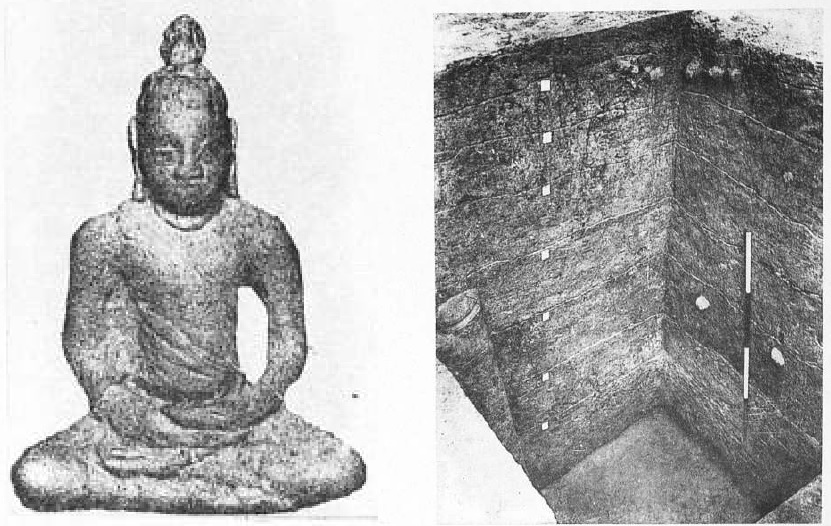
Concluding remarks: Any way, going through all data and information, the following points may have to be kept in mind:
- The Sangam literature has been dated from 300 BCE to 100 CE, and the Sangam period has been fixed accordingly.
- Recently, based on the single C-14 dating of Keeladi sample, the 580 BCE date is claimed for the Sangam period.
- Thus, the “historic period” of Sangam period is claimed to precede the Asokan period of 3rd cent.BCE.
- However, there has not been any inscription found comparable to the Asokan inscriptions, as the claim is made on few “marks” found on potsherds.
- However, there has not been any consensus among the historians and archaeologists, as the town formation and other material evidences do not go back to such 6th cent BCE period.
- Here, now no sample has been collected and therefore scientific dating cannot be thought of.
- The “15,000” years claim has been far-feteched and has no historical basis.
- No human habitation is proved for the different levels assumed for the existence of a city based on the photographs.
- They also claim that they would excavate for “Kumarik kandam,” another myth floated by the Tamil protagonists and linguistic enthusiasts.
- Under the guise of “scientific studies,” such claims need not be made and news created sending wrong signals to the general public.
K. V. Ramakrishna Rao
22-01-2023 / revised 15-04-2023

[1] S.R.Rao, Excavations at Kaveripattinam, Transactions of Archaeological Society of South India, Madras, 1965.
[2] S. R. Rao, Marine archaeological explorations of Tranqubar-Poompuhar region of Tamil Nadu coast, Journal of Marine Archaeology, Goa,1991, No.2, pp.5-20.
S. R. Rao, Underwater explorations of submerged towns near Tranquebar Tamil Nadu, Recent Advances in marie archaeology, Goa, 1991, pp.60-64.
[3] S. R. Rao, Marine Arhaeology in India, Publications Division, Ministry of Information and Broadcasting, Government of India, New Delhi, 2001, See Chapter-VI – Discovery of Poompuhar submerged in the Bay of Bengal, pp.169-192.
[4] Hancock, G., Underworld: The Flooded Kingdoms of the Ice Age, Penguin Books, London, 2002, p. 741.
[5] https://www.nio.org/galleries/show/poompuhar
[6] Times of India, Tamil Nadu’s Poompuhar may be over 15,000 years old: Study, DEEPAK KARTHIK / TNN / Updated: Jan 21, 2023, 05:03 IST.
[7] https://timesofindia.indiatimes.com/city/trichy/tamil-nadus-poompuhar-may-be-over-15000-years-old-study/articleshow/97186246.cms
[8] SM. Ramasamy1, J. Saravanavel, K. Palanivel, C. J. Kumanan and D. Rajasekhar, Detection of submerged harbour using GEBCO and MBES data, in the offshore region of ancient port city Poompuhar,South India, Current Science, Vol.119, No.3, 10 august, 2020, pp.526-534.
[9] Lissa, M., et al. “Semantic data model for knowledge representation and dissemination of cultural heritage site, Poompuhar.” CURRENT SCIENCE 123.10 (2022): 1237.
[10] The Hindu, Ancient port city of Poompuhar traced undersea, claim researchers, S. Ganesan, January 20, 2023 10:12 pm | Updated January 21, 2023 06:10 pm IST.
[11] https://www.thehindu.com/news/national/tamil-nadu/ancient-port-city-of-poompuhar-traced-undersea-claim-researchers/article66413969.ece
[12] Frotline, ‘Be sceptical, and not negative and destructive’, Interview with Iravatham Mahadevan. Published : Mar 30, 2002 00:00 IST.
https://frontline.thehindu.com/the-nation/article30244518.ece

Filed under: 12000 years of Indian culture, academic, anthropology, Ariyar, arya, Aryan, broken parts, broken sculptures, bronze age, buddha, Buddhist, Buddhist relic, c-14, category, chaitya, character, chola, chola dynasty, chola ship, cholas, chronology, civilization, date of Buddha, Dating Indian seeds, Dramila, Dravida, Dravidam, dravidar, Dravidi, Dravidian, dravidian model, dravidian stock, ethnicity, ethnology, evidence, evolution, Fisherman, folklorism, food, fossil, fossil park, heritage, heritage tag, historian politician, historical politician, historicity, historiography, historiosophy, history, history usage, history useful, history useless, Iraiyanar Agapporul Chronology, Kaveripumpattinam, linguistuic study, myth, mythologization, mythology, poompuhar, puhar, Sangam, sangam, Sangam literature, sangam literature, sangam period | Tagged: archaeology, chola, chola dynasty, cholas, excavation, kaveri, Kaveripumpattinam, manimekhalai, NIO, NIOT, poompuhar, port, port city, post sangam, puhar, S. R. Rao, sanga literature, sangam, sangam chronology, sea port, submerged, submerged site, submerged temple | Leave a comment »


























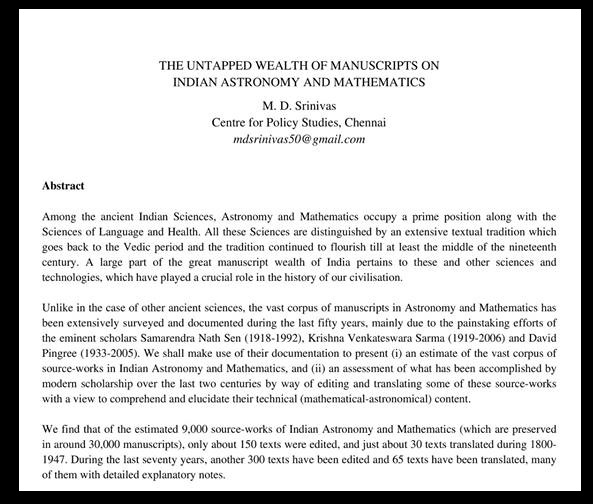
















































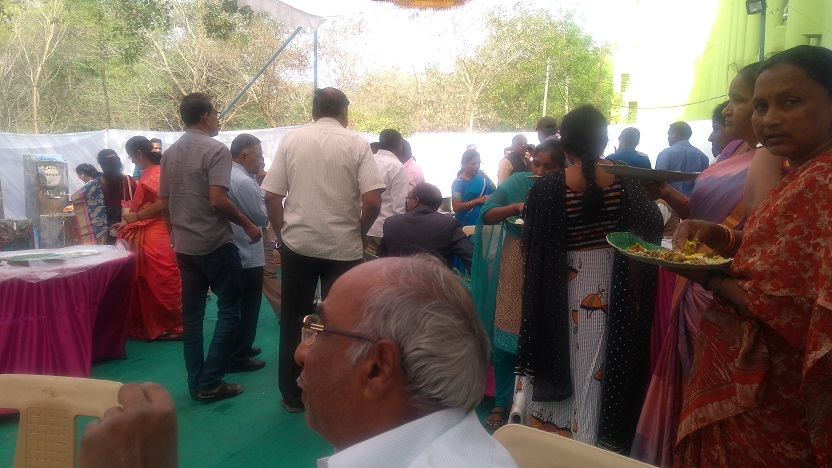









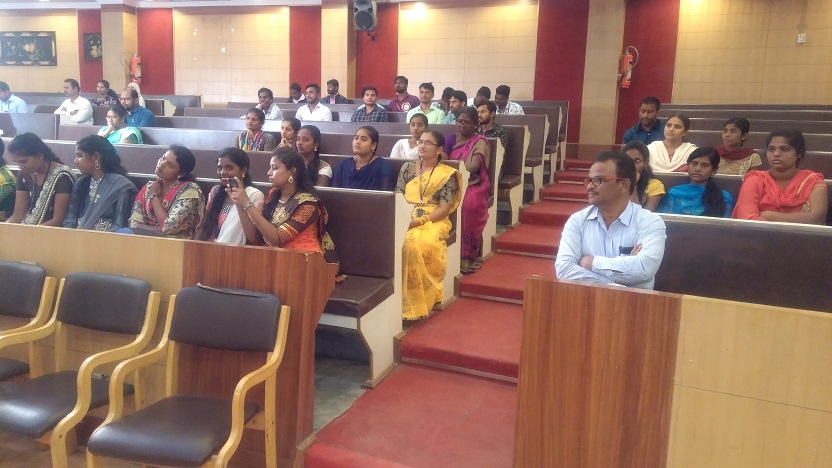





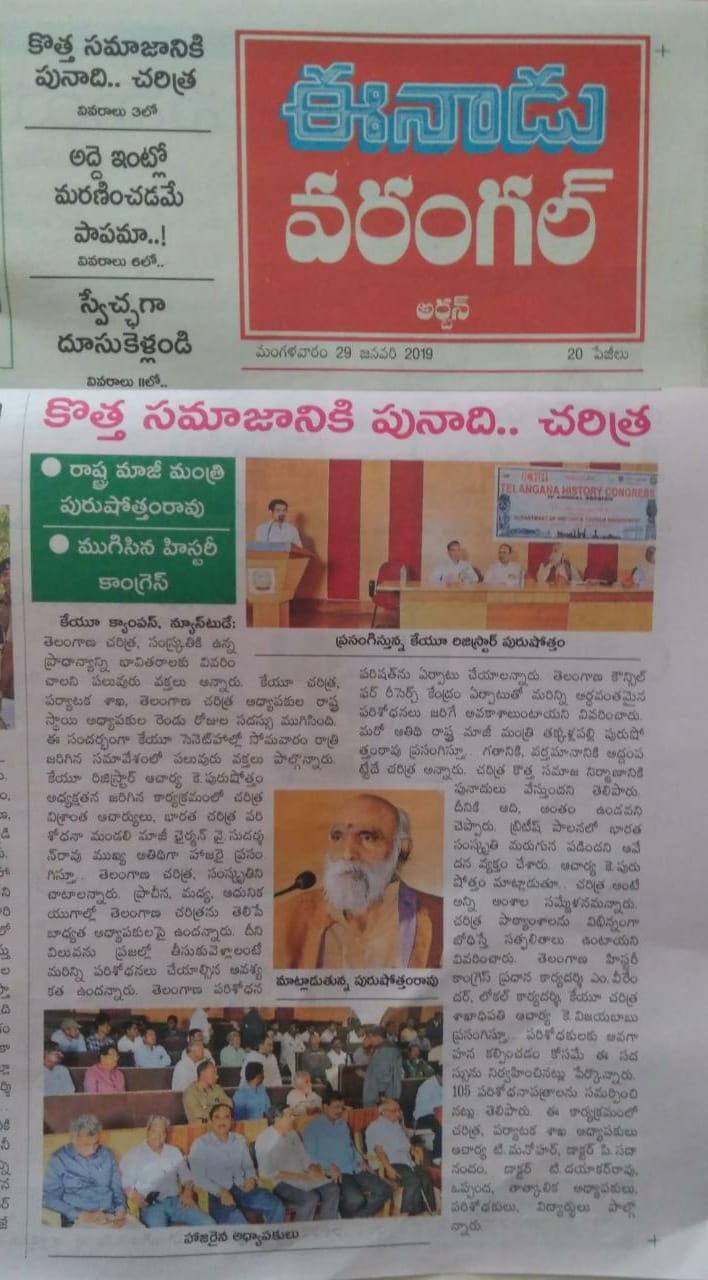




















 Raman P. Sinha
Raman P. Sinha Sudharshan Kumar
Sudharshan Kumar The last paper “From Cholas ocean to Lake to “Bay of Bengal”: The Chnge in the Colonial Cartography, Historiograhy and Maritime Ethics” was presented by K. V. Ramakrishna Rao
The last paper “From Cholas ocean to Lake to “Bay of Bengal”: The Chnge in the Colonial Cartography, Historiograhy and Maritime Ethics” was presented by K. V. Ramakrishna Rao


